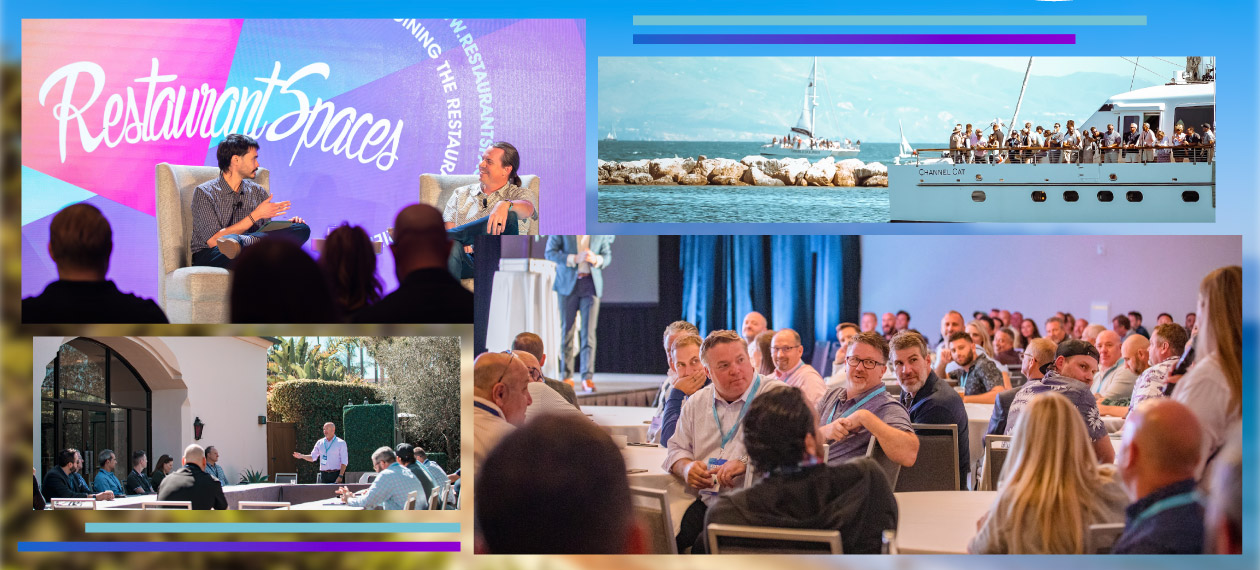
After a challenging last few years, the restaurant industry is beginning to find its footing. But it’s anything but at a standstill.
The pandemic served as a potent catalyst for the development of innovations that are being tweaked and refined, but also solidifying into the components of the next generation of the modern restaurant.
Streamlined, smart drive-thrus. Back-of-the-house automation. A re-imagination of physical spaces and the dining experience. All that – and a lot more – were discussed at RestaurantSpaces Fall in Santa Barbara, CA, where restaurant chain leaders gathered to explore the intersection of design and technology.
The event began with a thoughtful discussion on envisioning the future of the restaurant, with innovation being the central topic.
“Covid saw a lot of great collaboration and cooperation in the restaurant industry, which led to the adoption of a lot more tech,” said Jack Gibbons, CEO of FB Society. “We’re in the second inning, but we’re on the way.”
The takeout trend that began in earnest during the pandemic has only gotten stronger, leaders said, and chains would do well to cater to customers keen on interacting with restaurants on their own terms.
“If a brand shifted to a majority of sales in takeout when before Covid they were sub 30 percent,” said Justin Nedelman, Chief Real Estate Officer for FAT Brands, that means restaurants need to “be even more all about efficiency. No dead space. Possibly co-brand to leverage excess capacity. Be as frictionless as possible in your operations.”
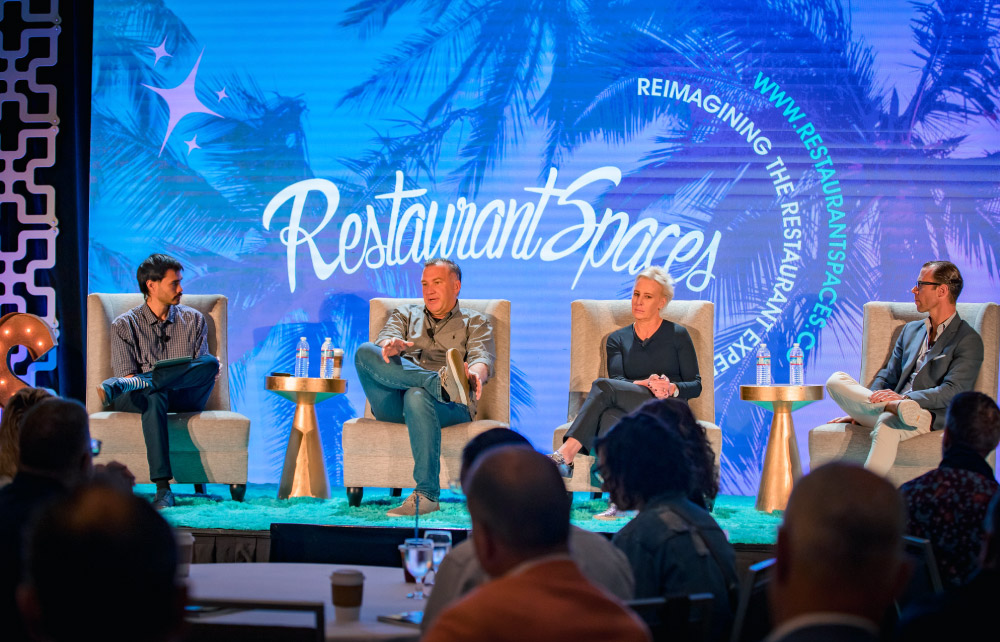
L-R: Jason Schwab (Producer, RestaurantSpaces), Jack Gibbons (CEO, FB Society), Kelly MacPherson (CTO, Union Square Hospitality Group), Justin Nedelman (Chief Real Estate Officer, FAT Brands)
He wondered how restaurants could “Amazon” a guest experience. For example, he said, a guest’s license plate could be scanned as they enter a drive-thru and they could be asked if they wanted the same order they did the last time they visited. He encouraged the CEOs of experience-driven restaurant brands to create the vision of the guest’s technology journey and not the third party software provider, to avoid experiences becoming commoditized and inauthentic.
Gibbons talked about his company’s re-imagination of empty retail spaces being repurposed into food halls, with “a little bit of everything,” from visual arts to entertainment to a fast-casual dining experience, all wrapped up in an experience that provides “a connection to the community.”
“The restaurant of the future is going to rely on nuance,” he said. “If there’s no secret sauce, it doesn’t have a purpose.”
Various, cutting-edge tech was discussed during the event, from the use of delivery bots that use geolocation to deliver food to various forms of automation and robotics in the kitchen.
Still, for all the talk of automation in the space, Gibbons was insistent that the core of any successful restaurant is and should always be people.
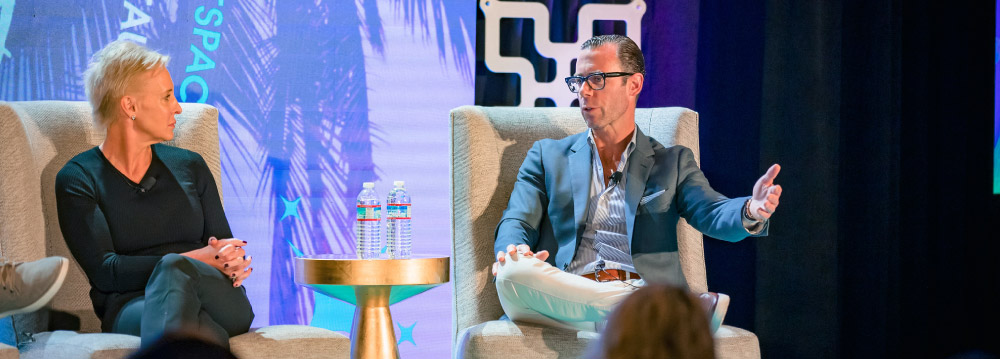
Kelly MacPherson (CTO, Union Square Hospitality Group), Justin Nedelman (Chief Real Estate Officer, FAT Brands)
“People still matter,” he said. “The business of making food, the specialness, the creation of the (customer) experience. You need to train high-quality people and create a culture that respects them and gives them something to look forward to.”
Getting back to basics was top of mind for Kelly MacPherson, CTO of Union Square Hospitality Group. Even in the face of multiple headwinds, from inflation to staffing woes to supply-chain issues, she is optimistic about the future of the industry. Dealing with challenges could mean streamlining a menu to fewer, but higher quality choices, leveraging data to make better decisions from staffing to ordering and maintaining stock, and using tech in a way that adds long-term operational value.
“Coming out of the pandemic, it’s like a new era of understanding how we take the industry to the next level,” she said. “We are always saying, ‘the best is yet to come.’”
Andrew K. Smith, Managing Director & Co-Founder of Savory Fund, took the stage for an intimate and revealing fireside chat, encouraging leaders in the audience to embrace disruption, but not at the expense of the intangible elements of a restaurant experience that keeps customers loyal to a particular brand.
“The smells, the sights, the experience. You want that ‘it’ factor that you can’t describe but you can feel,” he said. “You want to be the new cool kid, because being cool is sticky.”
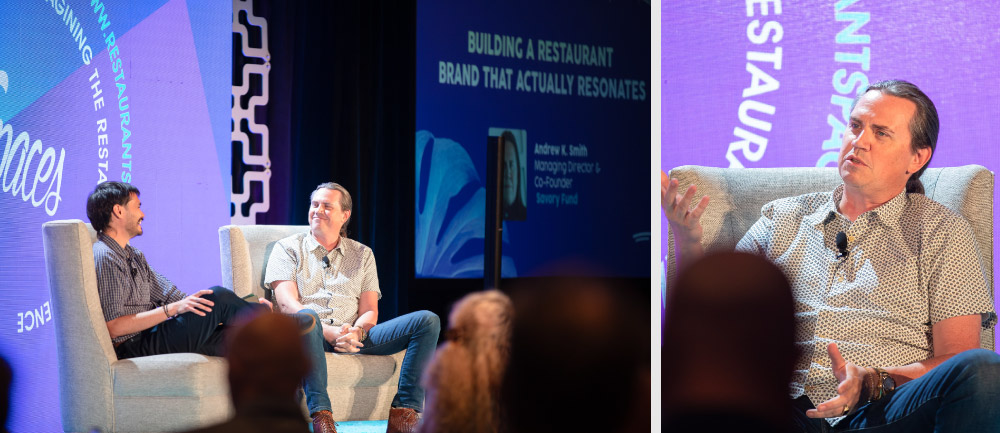
In discussion with Savory Fund Managing Director & Co-Founder, Andrew Smith
Covid ushered in tech advancements at a pace not seen in the industry, Smith said, from the now ubiquity of ordering apps or the growing desire for food to be delivered. Still, keeping growth at a responsible pace is key to being both tech-savvy for the sake of efficiency and also maintaining an experience that is warm, inviting, and customer-centric. Succinctly, don’t be afraid to innovate, but don’t forget the basics either.
“Customers don’t like rapid change,” Smith said. “Good food, good value for their dollar. That’s what they want.”
Even though the restaurant industry is a highly competitive one, Smith stressed the need for cooperation and collaboration in the space. He has no issue sharing his insights with others, he added, seeing it as a way for everyone to benefit.
“A rising tide lifts all boats,” he said. “We will learn together. The future is full of innovation, and we are going to invest a lot of money behind it.”
Khalilah Cooper, Executive Director of Design for Chick-fil-A, discussed the chain’s experimentation with a “Drive-Thru Express” lane, dedicated for those who ordered their food ahead using the chain’s app. It not only provides a faster, more efficient experience but also provides for more accurate orders, she said.
Customers who use this tech can bypass the traditional drive-thru, arriving at the restaurant, scanning a QR code using the app, and then pulling around to pick up their food.
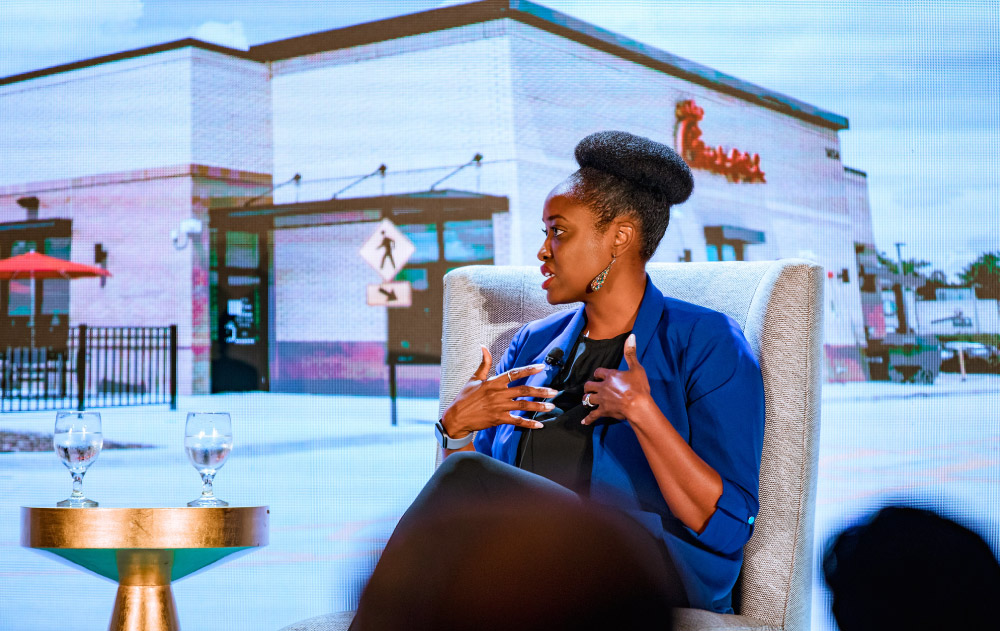
Khalilah Cooper, Executive Director of Design at Chick-fil-A
Cooper also spoke at length about a new prototype restaurant the chain has opened in Florida, one with a re-imagined interior that caters to customers’ changing tastes as well as how they want to interact with physical spaces. For instance, there is a handwashing station, a pickup shelf for mobile orders, and multipurpose space for staff training, gathering, and catering.
“We are always innovating,” Cooper said. “But we don’t innovate more just for tech’s sake, we ask how it can alleviate a pain point to make things easier for our customers and can it be maintained over time.” 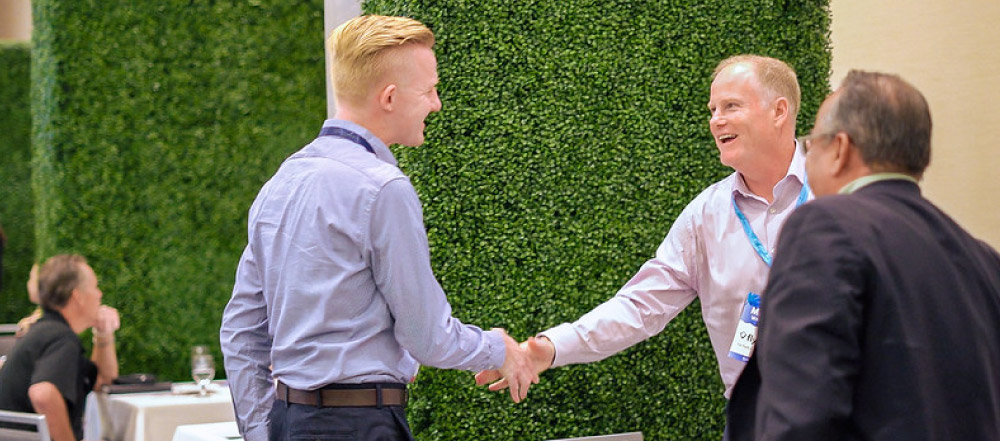
1-1 sourcing meetings at RestaurantSpaces
Between talks, restaurant chain leaders met with vendors and suppliers in a series of 20-minute sit-downs, discussing the latest innovations and cutting-edge technologies meant to fill in the gaps in the rapidly changing landscape of today’s modern restaurants. The meetings, a signature element of a RestaurantSpaces retreat, are an intimate, personable way of networking not found anywhere else.
In addition to the wealth of provocative, thoughtful content and discussion, attendees participated in several fun-filled activities, including a sail on one of the nation’s largest catamarans, rocking out to the soaring sounds of the world’s top Queen tribute band “Queen Nation”, and took a food tour of Santa Barbara’s Funk Zone.
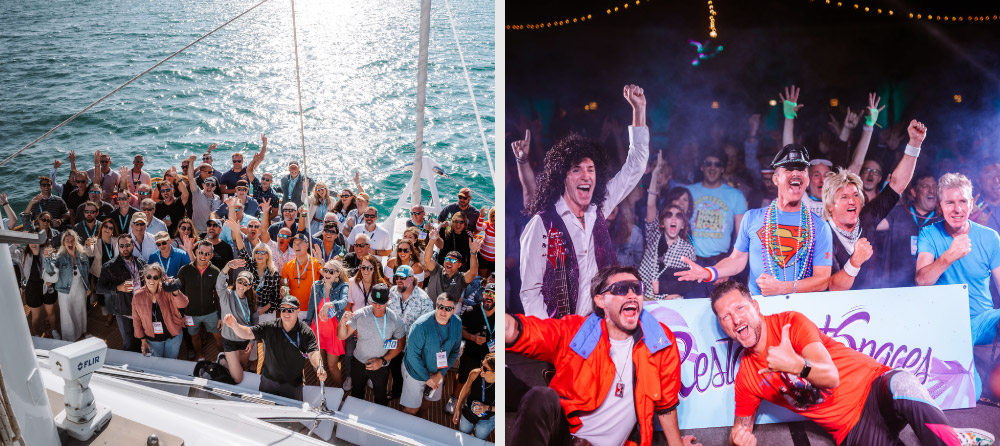
All told, it was a RestaurantSpaces to remember. Join us at the next RestaurantSpaces event April 2-4 in Austin, TX, where discussions about the innovations moving the industry forward are sure to ignite inspiration and turn a few heads.
Posted by
A One of a Kind Retreat for Hotel Development, Design & Construction Leaders.
Nov 2-4, 2025 | Scottsdale, AZ
Learn more
© Copyright 2025 influence group. All Rights Reserved
Comments